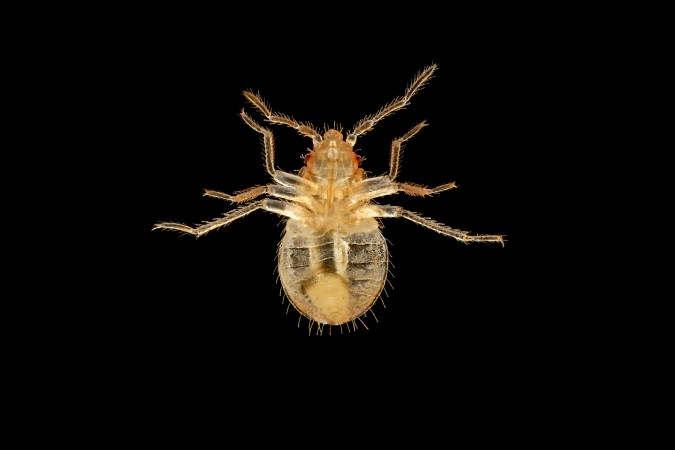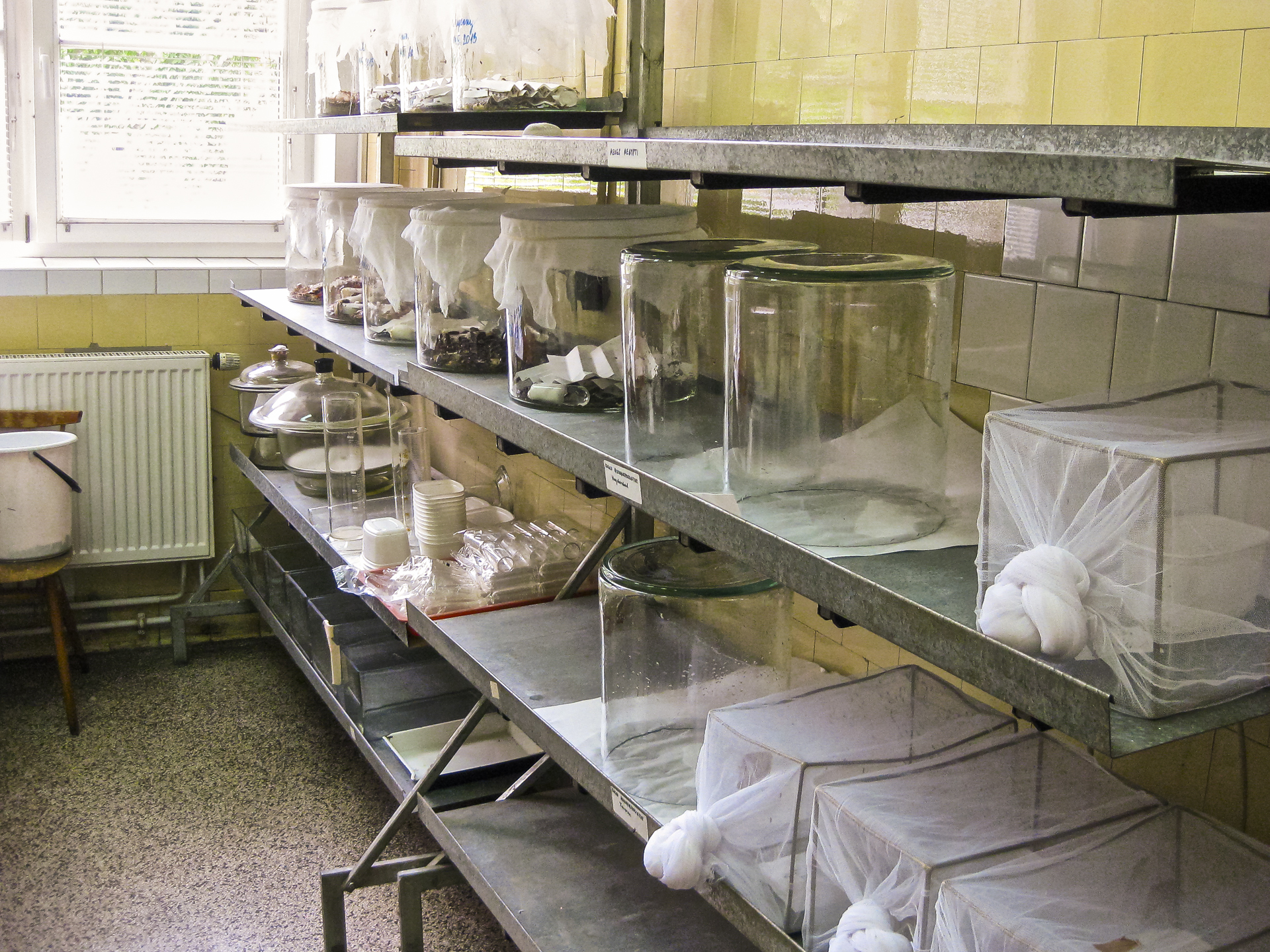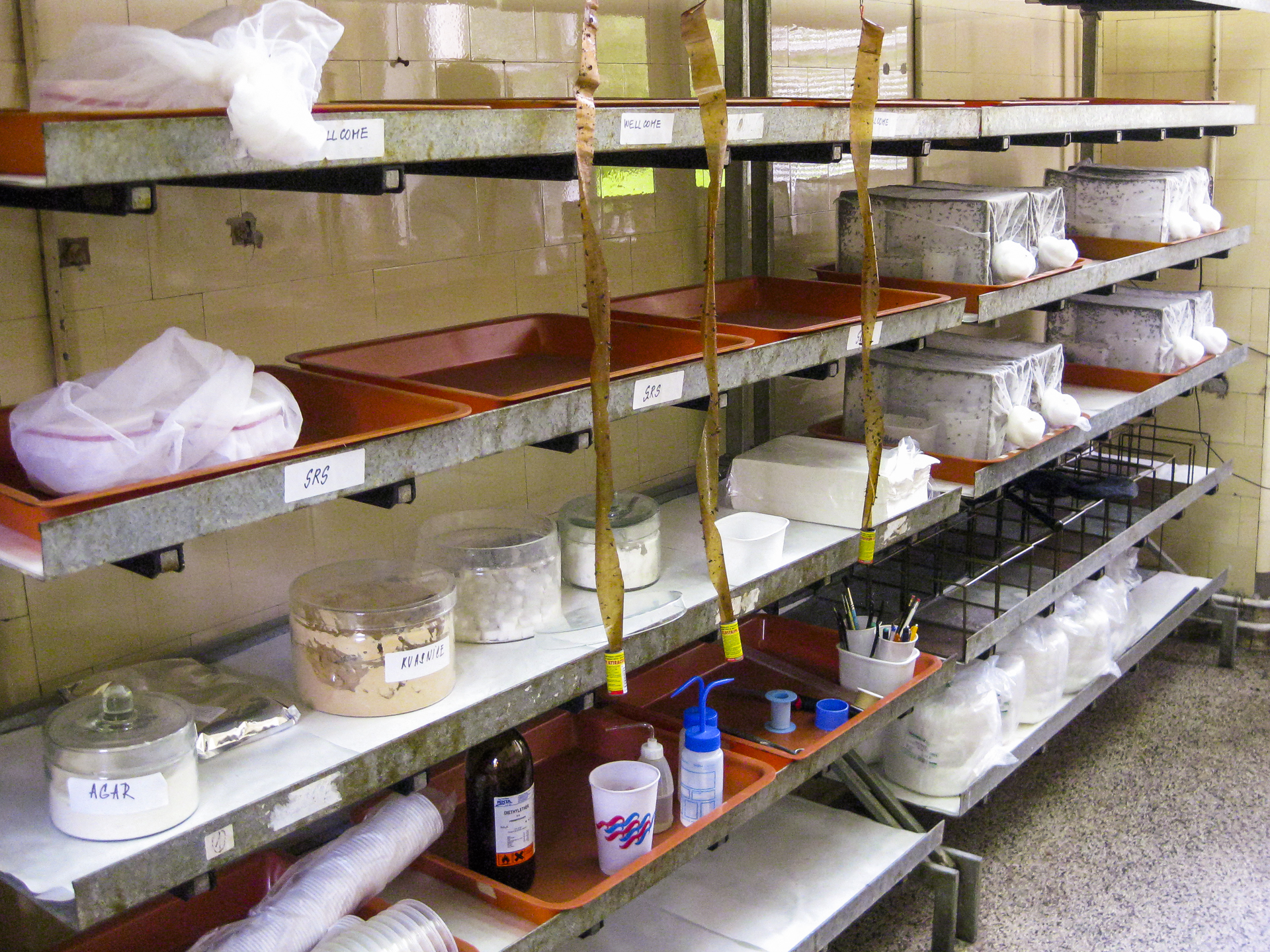
After a run-in with bed bugs in her apartment in New York City, science writer Brooke Borel embarked on a quest to understand everything about the little critters. In this excerpt from her book, her adventures take her to the Czech Republic.
In Prague, curious to uncover the origin of the spread of pesticide-resistant bed bugs, I visited the National Institute of Public Health, a sprawling compound on a residential street on the city’s east side. There, I met with František Rettich, the director of the institute’s National Reference Laboratory for Rodent and Insect Control. I trailed him through the department’s long tiled corridor to the insectary, which smelled like spoiled milk, a sourness that spilled out of the room and into the hallway. I couldn’t tell where the smell came from, but there were a lot of possibilities. Long metal shelves on one side of the room were lined with thick glass jars that held German cockroaches, American cockroaches, and the famous hissing Madagascar cockroaches like a nightmare candy display. The hissing roaches were kept not for research but “just for fun,” said Rettich, as I peered through the glass at their impressive frames. Their thick and shiny articulated bodies, each longer than the palm of my hand, were frozen on the floor of the jar like mechanical toys in need of a windup.

Identical shelves on the opposite wall held lidless glass aquariums with ants so tiny I had to squint to be sure that they had legs, as well as netted boxes of various flies and mosquitoes. The open ends of the wispy netting were tied up like hair buns, which the researchers would unknot when they needed to reach the insects inside. Three ribbons of flypaper studded with carcasses curled beside an enclosure that was dense with black flies, which I was told are especially hard to contain even with netting.
Tucked in a corner, away from the glass displays, sat seven plastic cups sealed with netting and rubber bands. The cups held five populations of pesticide-resistant bed bugs, four from homes across the Czech Republic and one from an American hotel. Zdeňka Galková, a graduate student dressed all in white from her shirt to her socks and sandals, snapped a rubber band off one of the cups and showed me the young straw- colored bed bugs inside.
Oils and essences don’t do much more than make bed bugs smell good.
Galková had been working with the bugs for just four months and hadn’t yet had time to transfer them to permanent housing, a stack of seventeen glass jars on the shelf below. The number of jars seemed optimistic. Before she had enough bugs to fill so much glass, she had to build their numbers — a tricky endeavor in a lab with no animals to provide the blood. The plan, she said, was to develop an artificial feeder. I asked what the bugs ate in the meantime, and she rolled up her pant leg to reveal a faint pink mark from their last meal four weeks before, roughly the diameter of the mouth of one of the cups. Once Galková had enough bugs, she planned to test pesticides on them as part of the lab’s main line of research, which is to evaluate product efficacy for registration and labeling. Under the European Union’s rules, pesticides go through a registration process very similar to the Environmental Protection Agency’s in the United States, with a notable difference. Citronella and its “all natural” cousins do not enjoy a loophole with the EU, and companies that would like to register these must pay a fee of roughly $500 and have them tested for efficacy just like any other product.
Rettich explained that he advises these companies not to ask his team for product testing. He knows from experience, he said, that the oils and essences don’t do much more than make the bed bugs smell good. “If you insist, I’ll do it, and you will pay a lot,” he said. “Please, save five hundred dollars because I will likely say no in the end.”
Down the hall from the insectary in Rettich’s office, a high ceilinged room with walls painted an institutional cream, I sat with the sixty-seven-year-old entomoparasitologist to learn about bed bugs in Prague. (“I should be retired four years ago,” he told me, “but, still, I work.”) Like Galková, he was dressed in white, a uniform I learned is an institute-wide safety requirement to make it easy to spot spilled chemicals or blood.
As a vector control researcher, Rettich mainly works with bloodsucking arthropods such as mosquitoes and ticks. But as the bed bug problem in Prague surged over the past decade or so, he lamented, his responsibilities extended to this pest as well. As we settled into our conversation, he told me he first “met the problem of bed bugs in the mid-eighties,” when a friend asked for help getting rid of beetles in his apartment. Although Rettich had never seen bed bugs in person, he knew immediately that his friend was not suffering from beetles. Still, the bug was exotic back then — when head lice and cockroaches were more common Czech pests — and Rettich was able to clear up the susceptible bugs easily. “I sprayed my friend’s flat with pyrethrin. And it was perfect.”
Prague seems as good a city as any in the region for bed bug ground zero.
The narrative that followed fit other Czech stories I heard during my trip. The bugs were widespread through World War II, after which they were controlled, in part, by dragging furniture out of homes and burning it. After the war, there was a respite that was partially aided by DDT and other insecticides. Then, in 1968, the Soviets invaded Czechoslovakia to quash an attempt at reform and to whip the country back in line with the communist bloc. According to many of the Czechs that I interviewed, although Rettich did not agree, the Soviets brought more bed bugs, which terrorized the country until it was able to control the insects once again with DDT (the pesticide was banned by 1974). During the rest of the communist era, the bugs were rare, in part because travel outside of the country was strictly limited and the bugs were susceptible to pyrethroids. Then the bugs bounced back around 2006. The reasons the Czechs gave me were familiar: tourism, the purchase of used furniture, and insecticide resistance.
Prague seems as good a city as any in the region for bed bug ground zero. It is one of Eastern Europe’s largest cities, with a bustling tourism economy that draws travelers from all over the world. But the timing didn’t synch with the theory that the resistant bed bugs in the United States had come from Eastern Europe. If large numbers of the bugs started showing up in 2006, it seemed unlikely that they were responsible for seeding the resistant bugs that landed in America in the nineties.

Even if the bugs hadn’t spread from Eastern Europe to Western Europe and into the United States, where had the Czech bugs come from? Rettich suggested that the resistant strains might have originated somewhere in Africa. Within Prague, he added, although he didn’t necessarily agree here either, people blamed Chinese and Vietnamese immigrants for spreading the pests within the massive Soviet era apartment complexes that dot the city. To Czechs, he said, these foreigners have “strange habits,” including a higher tolerance for pest insects. Czechs also blamed the Roma, more commonly and pejoratively called gypsies, a growing and impoverished ethnic minority throughout Eastern Europe. Most live on the fringes of society, at the edges of cities or in shantytowns in the countryside, although some apartment buildings within Prague are mainly Roma, which means a possible physical connection on public transportation and in other shared spaces.
Rettich led me back to the tall gates of the institute. As I began my walk back to my hostel, I wondered whether hunting the resistant bed bugs’ origin was futile. Each person I spoke with told a story with a similar arc, but with different characters: the bed bugs fell at some point in the mid-1900s, then rose half a century later, and the people or regions who were to blame were usually outside the demographic of the person doing the theorizing. It wasn’t surprising, considering the human tendency to label us versus them, or familiar versus foreign, especially when it comes to disease or infestations. This held true even for a bug with a history so intimately intertwined with our species as a whole. Bed bugs evolved to survive on any human blood, and yet they are always thought of as belonging to someone else.
Featured image shows a bed bug nymph, photographed by Graham Snodgrass. This is an edited excerpt from Infested: How the Bed Bug Infiltrated Our Bedrooms and Took Over the World, by Brooke Borel. The book was published by the University of Chicago Press with additional support from the Alfred P. Sloan Foundation.



















